1일:
New Year’s Day
(신년)
16일:
Epiphany
(에피파니)
셋째주월요일:
Martin Luth
er Kings Bir
thday
(마틴루터킹데이)
-2월-
16일:
St. Valentines Day
(성발렌타인데이)
셋째주월요일:
President’s Day
(워싱턴탄생일)
-3월-
17일:
St. Patricks
Day
(성패트릭스데이)
-4월-
3월말~4월초중:
Easter Day
(부활절)
3월말~ 4월말:
Cherry Blossom
Festival
(벚꽃축제)
1일:
April
Fool’s Day
(만우절)
-5월-
둘째주일요일:
Mother’s Day
(어머니날)
마지막주일요일:
Memorial Day
(전몰장병기념일)
-6월-
14일:
Flag Day
(국기의날)
셋째주일요일:
Father’s Day
(아버지의날)
-7월-
4일:
Independence
Day
(독립기념일)
-8월-
26일:
Woman Suffrage
(여성참정권)
-9월-
첫째주월요일:
May Day
(노동절)
중순:
Indian Summer
(인디언썸머)
-10월-
둘째주:
Columbus Day
(콜럼버스데이)
넷째주월요일:
Veterans Day
(재향군인의날)
31일:
Halloween
(할로윈)
-11월-
첫째주화요일:
Election Day
(선거날)
넷째주목요일:
Thanksgiving day
(추수감사절)
-12월-
10일:
Human Right Day
(인권의날)
25일:
Christmas
(크리스마스)
셋째주월요일: Martin Luther King, Jr. Day
Proclamation 5431 --Martin Luther King, Jr. Day, 1986
January 18, 1986
By the President of the United States of America
A Proclamation
This year marks the first observance of the birthday of Dr. Martin Luther King, Jr. as a national holiday. It is a time for rejoicing and reflectin
g. We rejoice because, in his short life, Dr. King, by his preaching, his example, and his leadership, helped to move us closer to the ideals on
which America was founded. We reflect on his words and his works. Dr. Kings was truly a prophetic voice that reached out over the chasms
of hostility, prejudice, ignorance, and fear to touch the conscience of America. He challenged us to make real the promise ofAmerica as a l
and of freedom, equality, opportunity, and brotherhood.
Although Dr. King was an uncompromising champion of nonviolence, he was often the victim of violence. And, as we know, a shameful act
of violence cut short his life before he had reached his fortieth birthday.
His story is well-known. As a 26-year-old minister of the Gospel, Dr. King led a protest boycott of a bus company that segregated blacks, tr
eating them as second-class citizens. At the very outset he admonished all those who would join in the protest that ``our actions must be g
uided by the deepest principles of our Christian faith. Love must be our regulating ideal. Otherwise, he warned, ``our protest will end up as
a meaningless drama on the stage of history . . . shrouded with ugly garments of shame. Dr. Kings unshakable faith inspired others to resi
st the temptation to hate and fear. His protest became a triumph of courage and love.
Almost 30 years ago, on January 30, 1956, Dr. King stood amid the broken glass and splinters of his bombed-out front porch and calmed a
n angry crowd clamoring for vengeance. ``We cannot solve this problem through retaliatory violence, he told them. Dr. King steadfastly op
posed both the timid and those who counselled violence. To the former, he preached that ``true peace is not merely the absence of tension
; it is the presence of justice. To the latter, he said that ``in the process of gaining our rightful place we must not be guilty of wrongful dee
ds.
Dr. Kings activism was rooted in the true patriotism that cherishes Americas ideals and strives to narrow the gap between those ideals and
reality. He took his stand, he once explained, ``because of my love for America and the sublime principles of liberty and equality on which s
he is founded. He wanted ``to transform the jangling discords of our Nation into a beautiful symphony of brotherhood.
The majesty of his message, the dignity of his bearing, and the righteousness of his cause are a lasting legacy. In a few short years he chan
ged America for all time. He made it possible for our Nation to move closer to the ideals set forth in our Declaration of Independence: that
all people are created equal and are endowed with inalienable rights that government has the duty to respect and protect.
Twenty-three years ago, Dr. King spoke to a quarter of a million Americans gathered near the Lincoln Memorial in Washington --and to te
ns of millions more watching on television. There he held up his dream for America like a bright banner:
``I have a dream, he said, ``that my four little children will one day live in a Nation where they will not be judged by the color of their skin,
but by the content of their character. . . . This will be the day when all of Gods children will be able to sing with new meaning, `My country
tis of thee, sweet land of liberty, of thee I sing.
Let all Americans continue to carry forward the banner that 18 years ago fell from Dr. Kings hands. Today, all over America, libraries, hospit
als, parks, and thoroughfares proudly bear his name. His likeness appears on more than 100 postage stamps issued by dozens ofnations ar
ound the globe. Today we honor him with speeches and monuments. But let us do more. Let all Americans of every race and creed and col
or work together to build in this blessed land a shining city of brotherhood, justice, and harmony. This is the monument Dr. King would hav
e wanted most of all.
By Public Law 98 -144, the third Monday in January of each year ha



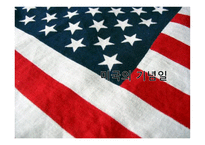
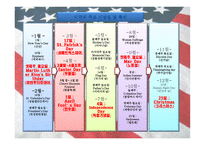
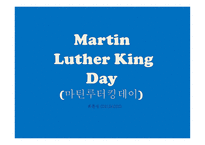

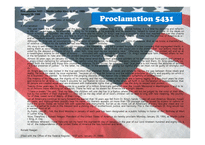



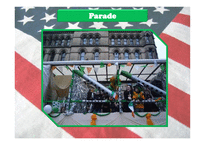





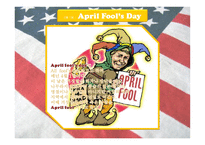
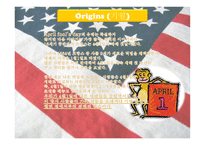


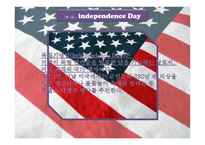
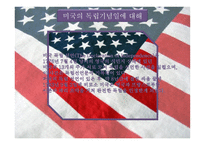
 분야
분야


